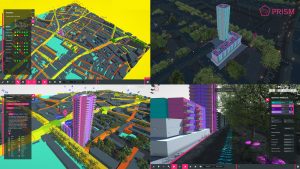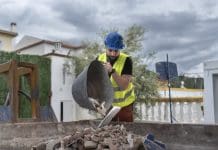Precision-manufactured housing can solve the shortfall in affordable homes. Jami Cresser-Brown, director of creative technologies at Bryden Wood, discusses a new app developed with the GLA and Cast Consultancy that harnesses location data to support its adoption
We know we need more homes. We need homes that are well built, the right size and where we’ll be safe, dry and warm. Homes that are genuinely affordable to rent or buy. As things stand, there just aren’t enough quality homes being built and the situation in London is particularly bad. This, sadly, is not news.
The good news, though, is that there are ways to bring the solution closer. PRiSM is our way, as you’ll see.
The Mayor of London’s 2017 manifesto stated we need 50,000 new homes a year. Since then, about 40,000 new homes have been built in London. Not enough, obviously. Of those, a little over a quarter have been ‘affordable’ housing, and the rest for private sale.
The full effects of Brexit and Covid-19 on the housing market are emerging but we can certainly say there will be more pressure on developers’ ability to build homes, through a shortage of labour. Likely new regulations about social distancing and other health and safety measures on building sites will also be detrimental.
So we need a way to build quality homes using fewer workers, in less time. Modern Methods of Construction, including precision-manufactured housing, provide that solution. At Bryden Wood, we’re working to make it as easy as possible for developers to adopt them.
Modern Methods of Construction
A number of methods are covered by the term “precision-manufactured housing” – platforms, panelised, volumetric. For all these methods, large elements of the building (walls, rooms, whole apartments) are manufactured away from the building site then assembled on site.
This means reduced time and labour, and no reduction in quality. In fact, just the opposite. Precision manufacturing means more consistency and higher standards. Elements are manufactured using repeatable processes in controlled factory conditions, not put together from scratch on dusty, muddy, congested and dangerous building sites.
Not everyone is ready to work with precision manufacturing. It represents a break from tradition. These modern methods are relatively new and have different properties, so they come with their own rules and designs have to work within those rules. This can be challenging, especially if you’re not sure which precision manufacturing method is best for your building. And this, in turn, means it’s complicated to assess the feasibility of projects.
To make this process more accessible, we made PRiSM
PRiSM is an open-source web app that lets you design a range of housing types, including linear corridor blocks, deck access, mansion blocks and towers, with or without podiums and basements, all within the mayor of London’s rules on space. PRiSM is built on a geospatial map of London and contains a host of precise local data, from building heights to road widths to public transport amenities and even trees (true to life in both location and type).
PRiSM helps you to design real buildings for real London locations.

In the app, the designer can change the number and sizes of homes within a building until they have the most feasible combination for a development.
And in terms of precision manufacturing, with PRiSM you can either design your building and then let the app calculate which precision manufacturing method to use or you can choose a construction method and design your building within the rules that go with that method.
This means you can create a concept design in just a few minutes, saving weeks in assessing feasibility of developments and giving architects more time to do what they do best.
It’s unacceptable that there are still barriers to providing quality homes for everyone. PRiSM and precision manufacturing remove many of them. Every developer should be including precision manufacturing within their feasibility studies then they can choose whether to be part of the solution.
We’re often asked whether all buildings designed in PRiSM and built using precision manufacturing will look the same. The answer is simply – no. In fact, as PRiSM handles the technical and regulated aspect of the design, the architect has much more time and resource to focus on where they add the most value; the aesthetics of the development and the user experience.
PRiSM and precision manufacturing place no limit on beauty. In the same way that humans all have the same skeleton but look very different externally, PRiSM takes care of what lies beneath and the architect can bring personality to the project.
We designed PRiSM with support from the GLA and Cast Consultancy. It’s free and open-source because we genuinely want it to help change the housing landscape. We launched the first version in June 2019 and we’ve just released version 2.0, which includes a number of significant improvements.
The more people who use PRiSM and precision manufacturing, the better it will be for all of us. It’s London-focused for now but there’s nothing to stop us – or anyone else – adapting it for other locations where the data is available.
If you’d like to see PRiSM, go to prism-app.io, and for more info or a demo, please get in touch with us, info@brydenwood.co.uk

Jami Cresser-Brown
Director of creative technologies
+44 (0)207 253 4772
Twitter: BrydenWood
LinkedIn: BrydenWoodTechnology
Instagram: Brydenwoodtech














